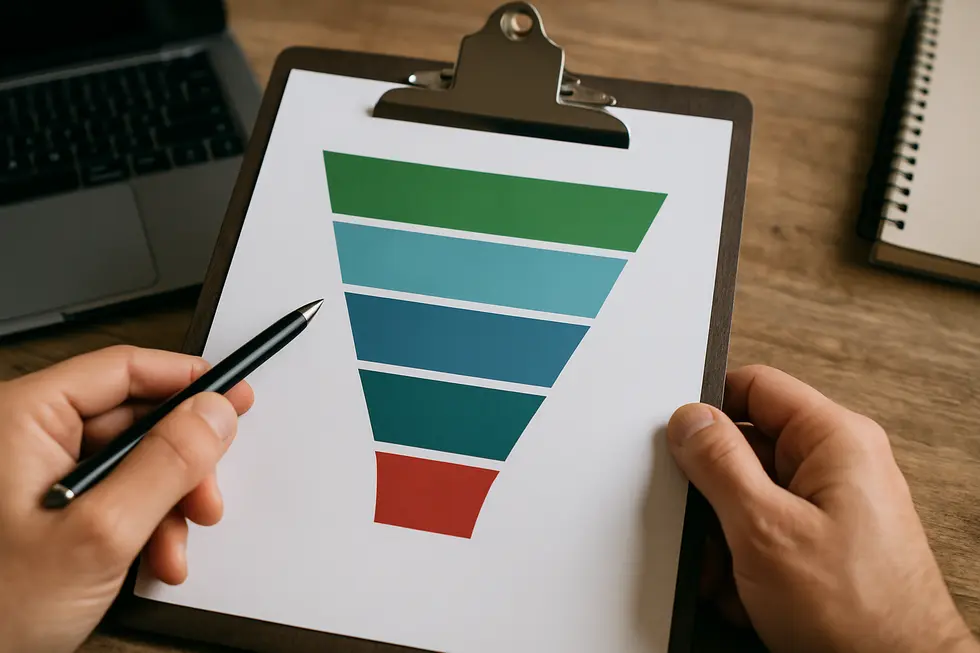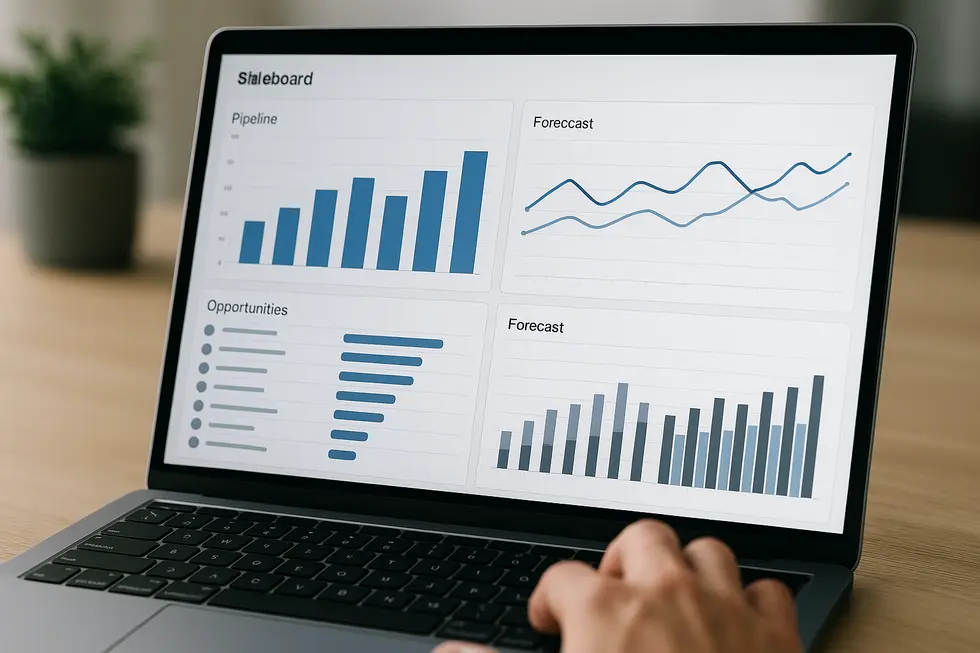Evaluating Lead Worth in Your Pipeline Is Full – But Are Your Leads Actually Worth It?

1. Unlocking True Lead Value: A Balanced Approach to Assessing Quality and Conversion Efficiency
When your sales pipeline is bursting at the seams, understanding the real worth of your leads demands more than just counting them. Assessing lead quality hinges on identifying whether a prospect truly fits your ideal customer profile, shows genuine buying intent, and is at the right stage to make a decision. A lead’s fit involves matching demographic and firmographic traits, ensuring they align with your target market. Intent becomes apparent from their interactions—downloading content or frequent website visits—which signal active interest rather than casual browsing. Timing, often overlooked, is equally critical; even the best prospect offers no value if they aren’t ready to engage now or soon.
Conversion efficiency ties directly to how well this quality assessment feeds into your sales process. Implementing systematic lead scoring allows teams to assign value based on a weighted combination of attributes and behaviors, prioritizing efforts on those most likely to convert. This approach shortens sales cycles and boosts success rates by shifting focus from sheer volume to meaningful engagements. Tracking sales metrics like pipeline velocity and demo-to-deal conversion rates offers insights into where prospects stall, pinpointing opportunities for refinement.
Ultimately, evaluating lead worth blends qualitative fit and intent with quantitative scoring and process metrics. This holistic perspective ensures your full pipeline delivers genuine sales potential instead of merely inflating numbers. For a deeper dive into lead scoring and its impact on conversion efficiency, explore this external resource. Meanwhile, optimizing qualification to truly separate valid prospects from passive contacts can be enhanced by strategies outlined in this guide on lead qualification.
2. Mastering Lead Qualification and Attribution to Unearth True Pipeline Value
Filling your sales pipeline with leads is only part of the challenge; determining which leads hold genuine potential is critical for sustainable success. Lead qualification serves as the cornerstone of this evaluation, employing proven frameworks like BANT (Budget, Authority, Need, Timeline) and MEDDPICC to systematically gauge a lead’s readiness and fit. These methods help identify prospects who not only show interest but also have the decision-making power and financial capacity to move forward within a defined timeframe.
Beyond initial qualification, attribution plays a crucial role in understanding where your best leads originate. By tracking metrics such as cost per lead, conversion rates, and sales cycle length tied to specific marketing channels, you can allocate resources more efficiently. This precision allows your team to double down on tactics producing higher-quality prospects, eliminating guesswork from your lead generation strategy.
Evaluating lead worth also hinges on scoring prospects based on both their profile alignment and engagement behaviors. Integrating data like website visits, content interactions, and email activity enriches the lead scoring process, spotlighting those prospects exhibiting genuine interest and readiness to buy. Segmenting these leads further enables personalized marketing approaches and enhances sales team focus.
Ultimately, mastering lead qualification and attribution empowers you to transform pipeline volume into meaningful revenue. This strategic insight provides a clearer picture of which opportunities deserve attention and investment, ensuring your sales efforts drive measurable growth rather than inflated metrics. For a detailed roadmap on optimizing this process, explore the guide on optimizing lead qualification for SMEs and comprehensive frameworks at Digital Authority.
Improving Lead Quality and Conversion When Your Pipeline Is Full – But Are Your Leads Actually Worth It?

1. Strategic Lead Evaluation: Prioritizing Quality and Conversion Potential in a Crowded Pipeline
When your sales pipeline is bursting with leads, the real challenge lies in distinguishing which prospects hold genuine promise. Focusing solely on lead volume risks overwhelming your team and diluting efforts on low-value contacts. To sharpen your focus, implementing a comprehensive lead scoring framework becomes indispensable. This system assigns numerical values based on key factors such as buying intent, behavioral cues like website visits and email engagement, and relevance to your ideal customer profile. Such scoring surfaces the leads most likely to advance toward a sale, enabling your sales team to prioritize connections that truly matter.
Monitoring core lead quality metrics further refines this evaluation. By tracking the flow from Marketing Qualified Leads (MQLs) to Sales Qualified Leads (SQLs), organizations can gauge how effectively marketing and sales teams align on lead readiness. Additionally, quantifying total lead value in terms of potential deal size and close probability provides a financial lens through which to assess pipeline health. These insights prevent the trap of vanity metrics and ensure your loaded pipeline translates into actionable opportunities.
Data-driven adjustments are equally critical. Analyzing which sources and segments yield the highest-quality leads allows for targeted outreach strategies that maximize conversion without waste. Rather than broad messaging, a refined approach leverages continuous feedback to concentrate resources where they generate the greatest impact.
This thoughtful blend of lead scoring, metric-driven monitoring, and adaptive outreach safeguards pipeline integrity. It transforms a crowded prospect list into a prioritized set of valuable leads, guiding sales efforts to focus on those most worth pursuing. For deeper guidance on effective lead scoring techniques, this comprehensive lead scoring guide offers valuable strategies that drive conversion without increasing workload[1].
To maintain precision in your sales efforts, consider exploring strategies for separating casual visitors from intent-driven prospects in your pipeline, detailed in this article on separate curious visitors real buyers.
2. Strategic Lead Management: Prioritizing High-Value Prospects to Maximize Conversions
When your sales pipeline is crowded, the key to driving meaningful revenue lies in managing and prioritizing leads based on their actual value rather than sheer volume. Prioritizing lead quality starts with targeted prospecting aligned with clear business objectives. This focus prevents overwhelming sales teams with unqualified prospects while increasing engagement and shortening the sales cycle. Implementing a robust lead scoring system is essential; by quantifying factors such as company profile, behavioral indicators, and engagement levels, sales professionals can concentrate their efforts on leads that demonstrate genuine buying intent.
Speed and accuracy in lead routing further enhance conversion potential. Leveraging automated, AI-driven systems to match leads with the most suitable agents ensures rapid follow-up within critical windows, dramatically improving response outcomes. Multi-criteria routing models refine this process by considering agent skills and lead complexity, avoiding bottlenecks and missed opportunities.
Alignment between sales and marketing teams plays a crucial role in sustaining lead momentum. Agreement on service levels and collaborative feedback loops ensure that prioritized leads receive consistent, timely nurturing. This ongoing engagement nurtures prospects who are not yet ready to buy, maintaining their interest without losing pipeline integrity.
As an example, organizations using intelligent lead routing have achieved significant uplifts in worked opportunities, demonstrating that disciplined management and prioritization of leads translate into measurable gains.
To harness these advantages, companies should adopt automated routing solutions combined with tailored scoring frameworks and SMART-targeted campaigns. Continuous refinement through CRM analytics supports precise adjustment, ensuring only leads with real conversion potential occupy valuable pipeline space.
For a deeper dive into effective lead routing strategies that enhance conversion, see this comprehensive toolkit for enhanced conversion.
Also, improving pipeline efficiency through targeted lead qualification relates closely to insights on optimizing lead qualification for SMEs, supporting smarter, value-driven sales processes.
Mastering Pipeline Health: Ensuring Quality Leads Drive Real Sales Impact

1. Strategic Pipeline Reviews and Lead Qualification: The Key to Evaluating Your Leads’ True Value
Keeping a sales pipeline full is only the first step; true effectiveness emerges from rigorous, ongoing pipeline reviews paired with precise lead qualification. Regular reviews serve as moments to assess the health of your pipeline—spotting stagnation, identifying bottlenecks, and reallocating efforts toward leads most likely to convert. Without these checkpoints, resources risk being wasted on prospects that neither fit your ideal customer profile nor demonstrate purchase intent.
Lead qualification frameworks like MEDDPICC bring structure to this process by examining factors such as the prospect’s metrics, decision-making criteria, economic buyer, and timeline. This level of scrutiny ensures that each lead not only fits the profile but also possesses the authority and urgency to move forward. A disciplined qualification approach prevents the costly trap of inflated pipelines—where volume masks poor conversion potential.
Moreover, maintaining alignment between marketing and sales teams on lead definitions is vital. Clarity about what constitutes a qualified lead ensures both departments focus their efforts on the same high-value prospects, fostering pipeline momentum with clearly defined next steps for each opportunity. This synergy reduces lead leakage and accelerates progression through the funnel.
By combining frequent pipeline evaluations with robust lead qualification, organizations optimize their sales processes to prioritize leads that truly matter. This refined focus transforms a crowded pipeline into a valuable, dynamic revenue engine rather than a misleading metric.
For practical techniques in managing your sales pipeline and lead qualification strategies, visit best practices for sales pipeline management.
To explore how sales teams can improve efficiency and effectiveness during pipeline management, consider insights on optimizing lead qualification for SMEs.
2. Harnessing Technology and Unified Sales-Marketing Efforts to Elevate Pipeline Value
A full sales pipeline alone does not guarantee business growth; the true measure lies in the quality and manageability of those leads. Modern pipeline management hinges on effectively harnessing technology alongside tightly aligned sales and marketing teams. Advanced CRM systems and sales pipeline analytics offer real-time visibility into deal progression and pipeline health, automating routine tasks like data entry and tracking customer interactions. This infrastructure not only boosts forecasting precision but also enables sales leaders to swiftly reallocate resources where needed, maintaining a dynamic and responsive pipeline.
Equally vital is aligning sales and marketing goals around shared pipeline targets that reflect revenue contribution and cost-efficiency. This collaborative approach mitigates common pitfalls such as blame over lead quality or mistimed handoffs. Regular joint planning and unified metrics create a seamless flow where marketing continuously refines lead generation strategies informed by feedback from sales. Such continuous communication ensures that only leads with true buying potential populate the pipeline.
Supporting this alignment, sales enablement tools integrated into CRM platforms empower reps with timely, relevant content that resonates with prospects. This combination of technology and synchronized team effort ensures that your pipeline doesn’t just brim with contacts but fills with prospects primed for conversion. For further insights on improving CRM data management and pipeline hygiene, explore how automating CRM data updates contributes to sales efficiency.
Learn more about maximizing sales success with pipeline analytics at Maximizing Sales Success with Sales Pipeline Analytics.
Maintaining Pipeline Hygiene and Accurate Forecasting to Maximize Lead Value

1. Keeping Your Pipeline Clean and Data Accurate: The Foundation for Trustworthy Sales Forecasts
A full sales pipeline is only as valuable as the quality and accuracy of its underlying data. Without diligent pipeline hygiene, inflated or stale opportunities can skew forecasts and misguide decision-making. Maintaining pipeline cleanliness begins with routinely removing outdated or inactive deals while ensuring deal stages reflect genuine buyer engagement and realistic close dates. Clear, objective qualification criteria help standardize which leads deserve advancement, eliminating subjective biases that erode pipeline reliability.
Regular pipeline reviews deepen understanding of progress and setbacks. Weekly one-on-ones with sales reps should focus on key activities driving pipeline momentum—such as discovery calls and proposals sent—rather than just outcomes. Monthly team reviews identify trends and bottlenecks for continuous improvement. Emphasizing activity-based coaching equips teams to sustain consistent deal progression, improving forecast accuracy.
Data hygiene extends beyond pipeline stages to the very records of leads and contacts. With over 70% of business data becoming obsolete annually, automated tools that refresh and cleanse CRM information are vital to avoid costly errors and blind spots. Consistent definitions and alignment across sales, marketing, and customer success teams prevent surprises and support unified forecasting.
Leveraging AI-powered reporting further enhances data integrity by systematically spotting missing information or anomalies tailored to your process. This intelligent maintenance preserves the pipeline’s trustworthiness, ensuring that “full” truly means filled with viable opportunities.
Incorporating disciplined pipeline hygiene and rigorous data management creates the foundation for reliable sales forecasting. This alignment between quantity and quality empowers informed strategic choices that translate a full funnel into meaningful revenue growth.
For additional insights on sustaining clean pipeline data and consistent sales management, explore this comprehensive resource on sales pipeline management best practices.
Also, consider how automating CRM updates can support continuous data accuracy and streamline your pipeline efforts: https://vaiaverse.com/vaiaverse-blog/automate-crm-data-updates/
2. Streamlining Your Pipeline: Ensuring Lead Quality Drives Reliable Forecasting and Sales Outcomes
Maintaining a clean and precise sales pipeline is essential for transforming a full list of prospects into predictable revenue. This process starts with pipeline hygiene, which goes beyond simply tracking opportunities; it demands continuous pruning of stale or unengaged leads and prompt updating of deal stages according to buyer activity. By establishing firm rules about when to remove a prospect or regress a deal to earlier stages, sales teams guard against inflated pipelines that can mislead forecasting and decision-making.
Evaluating lead quality depends on clearly defined qualification criteria that guide progression through the funnel. Frameworks such as BANT or MEDDIC offer structured ways to assess Budget, Authority, Need, and Timing, which help maintain consistency and focus. Data-driven analysis of conversion rates and sales cycle patterns further reveal where bottlenecks occur, enabling targeted interventions to accelerate pipeline velocity and reduce wasted efforts.
High-quality, actively managed leads directly improve forecast accuracy. When pipelines contain accurate, up-to-date information based on genuine engagement indicators, revenue predictions become far more reliable. Conversely, pipelines laden with unqualified or outdated leads inflate forecasts, resulting in resource misallocation. Maintaining CRM hygiene and ensuring alignment around pipeline stage definitions across teams enhances visibility and forecast confidence.
Ultimately, sales success hinges on focusing efforts on qualified leads whose progression through a well-maintained pipeline signals real buyer intent. Equipping sales teams with clear activities, continual coaching, and process automation tools fosters pipeline health and accelerates deal closure rates, transforming a full pipeline from a vanity metric into a sustainable growth engine.
For practical guidance on improving pipeline management and sales performance, explore strategies at Optimizing Lead Qualification for SMEs.
For deeper insights on pipeline best practices, see: https://brooksgroup.com/sales-training-blog/sales-pipeline-management/
Final thoughts
In an ever-competitive market, simply having a full pipeline is not enough; ensuring the quality and effective management of leads is paramount to converting potential into profit. By evaluating lead worth, enhancing quality, mastering pipeline management, and maintaining pipeline hygiene, small and medium business owners can ensure their sales efforts are both efficient and effective, resulting in sustained growth and success.
Book more calls, close more deals – with Sam, your AI-powered Lead Generator. Get started with Level 2 today.
About us
vaiaverse is the home of next-generation AI agents – digital employees that handle real business tasks across lead generation, sales, and customer support. Whether it’s qualifying leads by phone, answering common questions over WhatsApp, or managing follow-ups by email, our ready-made and bespoke AI Agents are built to save time, cut costs, and scale your operations without hiring. From simple drag-and-drop onboarding to advanced AI teams with SLAs – vaiaverse offers flexible solutions for companies ready to automate what slows them down and double down on what drives growth.









